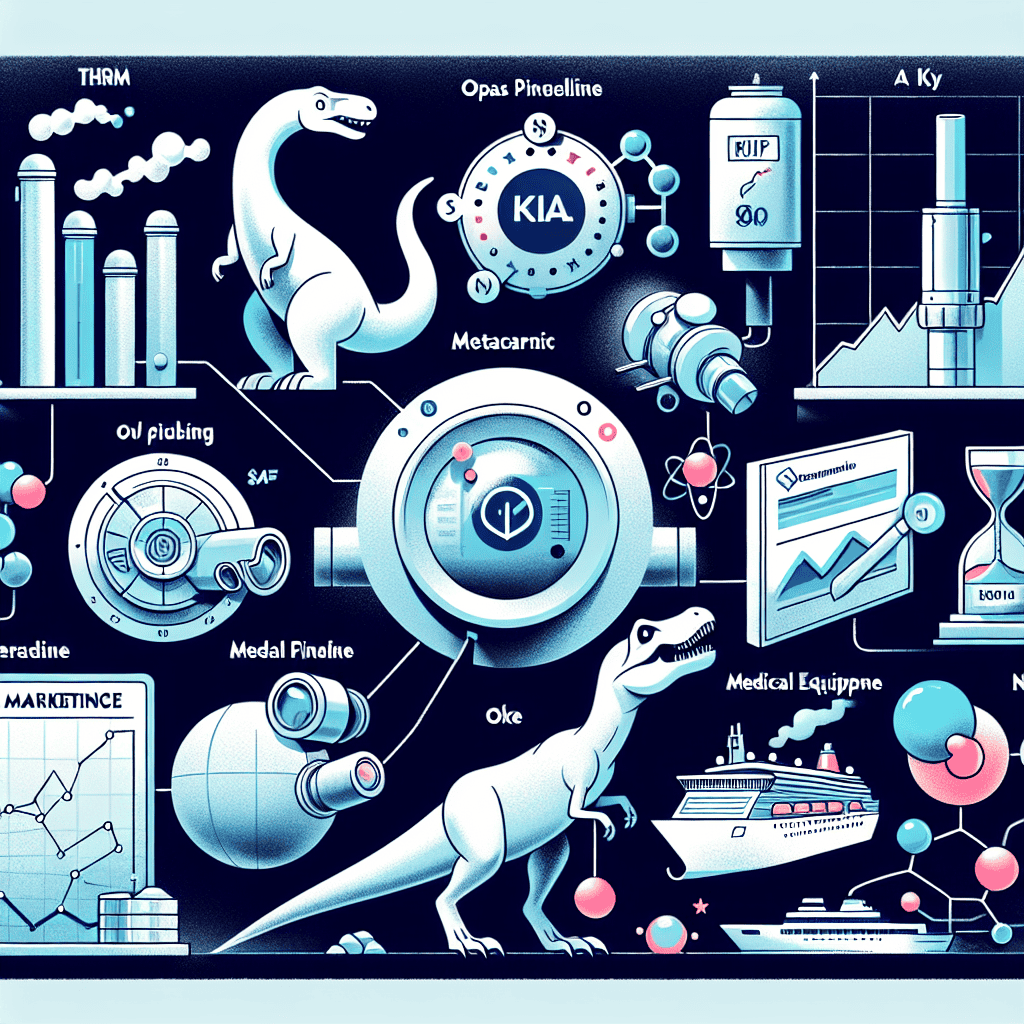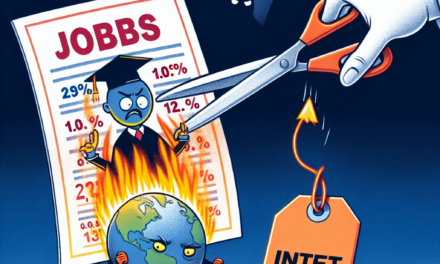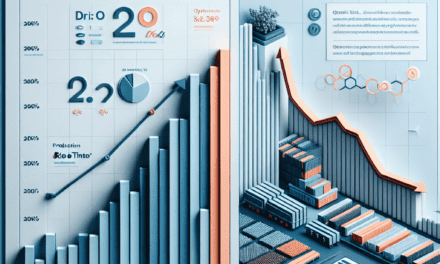“Navigate Tomorrow’s Market: Insights on THRM, DINO, KLAC, OKE, RJF, SYK, META, ABBV, NCLH.”
Introduction
Market Insights: Analyzing the performance and potential of key stocks is crucial for investors seeking to make informed decisions. This report delves into the market dynamics and financial health of several prominent companies: Gentherm Incorporated (THRM), HF Sinclair Corporation (DINO), KLA Corporation (KLAC), ONEOK, Inc. (OKE), Raymond James Financial, Inc. (RJF), Stryker Corporation (SYK), Meta Platforms, Inc. (META), AbbVie Inc. (ABBV), and Norwegian Cruise Line Holdings Ltd. (NCLH). Each of these companies operates in distinct sectors, ranging from automotive thermal management and energy to semiconductor equipment, financial services, medical technology, social media, pharmaceuticals, and leisure travel. By examining their recent performance, market trends, and strategic initiatives, this analysis aims to provide a comprehensive overview of their current standing and future prospects in the ever-evolving economic landscape.
Analyzing THRM’s Market Position and Future Growth Prospects
In the ever-evolving landscape of the global market, understanding the position and future growth prospects of companies like THRM is crucial for investors and industry analysts alike. THRM, known for its innovative solutions in the automotive and industrial sectors, has consistently demonstrated resilience and adaptability in a competitive environment. As we delve into THRM’s market position, it is essential to consider the broader context of the industry and the factors that may influence its trajectory.
To begin with, THRM has carved out a niche for itself by focusing on advanced thermal management technologies. This specialization has allowed the company to establish a strong foothold in the automotive industry, where the demand for efficient and sustainable solutions is on the rise. As electric vehicles (EVs) gain traction, THRM’s expertise in thermal management becomes increasingly relevant. The shift towards EVs presents a significant growth opportunity for THRM, as these vehicles require sophisticated thermal systems to manage battery temperatures and ensure optimal performance.
Moreover, THRM’s commitment to research and development has been a driving force behind its sustained growth. By investing in cutting-edge technologies and expanding its product portfolio, the company has managed to stay ahead of the curve. This proactive approach not only enhances THRM’s competitive edge but also positions it well to capitalize on emerging trends in the automotive and industrial sectors. Furthermore, strategic partnerships and collaborations have played a pivotal role in THRM’s market strategy, enabling the company to leverage synergies and access new markets.
In addition to its strong market position, THRM’s financial performance provides further insights into its growth prospects. The company has consistently reported robust revenue figures, reflecting its ability to adapt to changing market dynamics. This financial stability is underpinned by a diversified customer base and a global presence, which mitigate risks associated with regional economic fluctuations. As THRM continues to expand its operations, maintaining a balanced portfolio will be crucial to sustaining its growth momentum.
However, it is important to acknowledge the challenges that THRM may face in the future. The automotive industry is undergoing a transformative phase, with increasing regulatory pressures and a shift towards sustainability. While these changes present opportunities, they also pose challenges that require strategic navigation. THRM must continue to innovate and adapt to meet evolving customer demands and regulatory requirements. Additionally, the competitive landscape is intensifying, with new entrants and established players vying for market share. To maintain its leadership position, THRM must focus on differentiation and value creation.
In conclusion, THRM’s market position and future growth prospects appear promising, driven by its expertise in thermal management technologies and a proactive approach to innovation. The company’s ability to capitalize on the growing demand for EVs and its strong financial performance further bolster its outlook. Nevertheless, navigating the challenges of a rapidly changing industry will require strategic foresight and adaptability. By continuing to invest in research and development, forging strategic partnerships, and maintaining a diversified portfolio, THRM is well-positioned to thrive in the dynamic market landscape. As investors and analysts monitor THRM’s progress, it will be essential to keep an eye on industry trends and the company’s strategic initiatives to fully understand its potential for future growth.
DINO’s Strategic Moves in the Energy Sector: A Market Insight
In the ever-evolving landscape of the energy sector, DINO, a prominent player, has been making strategic moves that warrant a closer examination. As the global energy market undergoes significant transformations driven by technological advancements and shifting consumer preferences, companies like DINO are compelled to adapt and innovate. This article delves into DINO’s recent strategies, exploring how they align with broader market trends and what they signify for the company’s future.
To begin with, DINO has been actively investing in renewable energy sources, a move that reflects the industry’s gradual shift towards sustainability. As governments worldwide implement stricter regulations to curb carbon emissions, energy companies are under increasing pressure to reduce their environmental footprint. DINO’s commitment to expanding its renewable energy portfolio is not only a response to these regulatory changes but also a strategic effort to capture a growing market segment. By investing in wind, solar, and other renewable technologies, DINO is positioning itself as a forward-thinking company that is prepared for the future energy landscape.
Moreover, DINO’s strategic partnerships and acquisitions have played a crucial role in its market positioning. By collaborating with technology firms and acquiring startups specializing in energy efficiency and storage solutions, DINO is enhancing its capabilities and broadening its service offerings. These partnerships enable DINO to integrate cutting-edge technologies into its operations, thereby improving efficiency and reducing costs. Additionally, such collaborations provide DINO with valuable insights into emerging trends and consumer preferences, allowing the company to stay ahead of the competition.
In parallel, DINO has been focusing on digital transformation to streamline its operations and improve customer engagement. The adoption of digital technologies, such as artificial intelligence and data analytics, is revolutionizing the energy sector by enabling companies to optimize their supply chains, predict maintenance needs, and offer personalized services to customers. DINO’s investment in digital infrastructure is a testament to its commitment to innovation and efficiency. By leveraging these technologies, DINO aims to enhance its operational agility and deliver superior value to its stakeholders.
Furthermore, DINO’s strategic moves are also influenced by the fluctuating geopolitical landscape. With energy markets being highly sensitive to geopolitical tensions, DINO has been diversifying its supply chain to mitigate risks associated with regional instabilities. By securing alternative sources of raw materials and expanding its presence in stable markets, DINO is safeguarding its operations against potential disruptions. This proactive approach not only ensures business continuity but also strengthens DINO’s resilience in an unpredictable global environment.
In conclusion, DINO’s strategic initiatives in the energy sector underscore its commitment to sustainability, innovation, and resilience. By investing in renewable energy, forging strategic partnerships, embracing digital transformation, and diversifying its supply chain, DINO is well-positioned to navigate the challenges and opportunities of the evolving energy landscape. As the company continues to adapt to market dynamics and regulatory changes, its strategic moves will likely serve as a blueprint for other industry players seeking to thrive in a rapidly changing world. Through these efforts, DINO not only enhances its competitive edge but also contributes to the broader goal of a sustainable and secure energy future.
KLAC’s Technological Innovations and Their Impact on Market Trends
KLA Corporation (KLAC) has long been a pivotal player in the semiconductor industry, renowned for its cutting-edge process control and yield management solutions. As the demand for semiconductors continues to surge, driven by advancements in artificial intelligence, 5G technology, and the Internet of Things (IoT), KLAC’s technological innovations have become increasingly significant. These innovations not only enhance the efficiency and precision of semiconductor manufacturing but also influence broader market trends, shaping the future of technology and industry standards.
One of the key areas where KLAC has made substantial strides is in the development of advanced metrology and inspection systems. These systems are crucial for identifying defects and ensuring the quality of semiconductor wafers, which are foundational to the production of integrated circuits. By leveraging machine learning algorithms and sophisticated imaging techniques, KLAC’s solutions provide manufacturers with unparalleled accuracy and speed. This capability is particularly vital as semiconductor nodes continue to shrink, requiring ever more precise control over the manufacturing process. Consequently, KLAC’s innovations help manufacturers reduce costs and improve yields, thereby enhancing their competitive edge in a rapidly evolving market.
Moreover, KLAC’s focus on sustainability and energy efficiency aligns with the growing emphasis on environmental responsibility within the technology sector. The company’s tools are designed to minimize waste and energy consumption, addressing the industry’s need to balance technological advancement with ecological considerations. This commitment to sustainability not only bolsters KLAC’s reputation but also sets a benchmark for other companies in the semiconductor space, encouraging them to adopt greener practices.
In addition to its technological prowess, KLAC’s strategic partnerships and collaborations have further solidified its position in the market. By working closely with leading semiconductor manufacturers and research institutions, KLAC ensures that its solutions are at the forefront of industry needs and trends. These collaborations facilitate the exchange of knowledge and expertise, fostering innovation and driving the development of next-generation technologies. As a result, KLAC is well-positioned to anticipate and respond to shifts in market demand, maintaining its relevance and influence in a competitive landscape.
Furthermore, KLAC’s impact extends beyond the semiconductor industry, as its technologies are increasingly being applied in other sectors such as automotive, telecommunications, and healthcare. The proliferation of smart devices and the integration of electronics into various aspects of daily life have created new opportunities for KLAC’s solutions. By enabling the production of more reliable and efficient electronic components, KLAC contributes to the advancement of these industries, supporting the development of innovative products and services that enhance consumer experiences.
In conclusion, KLAC’s technological innovations are not only transforming semiconductor manufacturing but also shaping broader market trends. Through its commitment to precision, sustainability, and collaboration, KLAC is driving progress across multiple industries, setting new standards for quality and efficiency. As the demand for semiconductors continues to grow, KLAC’s role as a leader in process control and yield management will remain crucial, influencing the trajectory of technological development and market dynamics. The company’s ability to adapt and innovate in response to changing needs ensures its continued success and impact in an increasingly interconnected world.
OKE’s Role in the Energy Infrastructure: A Market Perspective

In the ever-evolving landscape of energy infrastructure, ONEOK, Inc. (OKE) stands as a pivotal player, offering critical insights into the market dynamics that shape this sector. As a leading midstream service provider, ONEOK’s operations are integral to the transportation, storage, and processing of natural gas and natural gas liquids (NGLs). This role is increasingly significant as the global energy market undergoes a transformative shift towards cleaner and more sustainable energy sources. Understanding ONEOK’s position within this framework provides a comprehensive perspective on the broader energy infrastructure market.
To begin with, ONEOK’s extensive network of pipelines and processing facilities underscores its importance in the energy supply chain. The company’s infrastructure spans key production areas, including the Williston Basin, the Mid-Continent region, and the Permian Basin. This strategic positioning allows ONEOK to efficiently transport and process natural gas and NGLs, thereby ensuring a steady supply to meet market demands. Moreover, the company’s focus on operational efficiency and cost management enhances its competitive edge, enabling it to deliver value to stakeholders while maintaining resilience in a volatile market environment.
Transitioning to the broader market implications, ONEOK’s operations are closely tied to the trends in natural gas production and consumption. As the world increasingly turns to natural gas as a cleaner alternative to coal and oil, the demand for reliable midstream services is expected to rise. ONEOK’s ability to adapt to these changing dynamics is crucial for its sustained growth. The company’s investments in expanding its infrastructure and enhancing its processing capabilities are indicative of its commitment to meeting future demand. This proactive approach not only positions ONEOK as a leader in the midstream sector but also contributes to the stability and reliability of the energy supply chain.
Furthermore, ONEOK’s role in the energy infrastructure market is also influenced by regulatory and environmental considerations. The push for reduced carbon emissions and increased sustainability has led to stricter regulations and a greater emphasis on environmental stewardship. ONEOK’s initiatives in this regard, such as reducing methane emissions and investing in renewable energy projects, reflect its alignment with these global trends. By integrating sustainability into its operations, ONEOK not only mitigates regulatory risks but also enhances its reputation as a responsible corporate entity.
In addition to these factors, ONEOK’s financial performance provides valuable insights into its market position. The company’s strong balance sheet and consistent cash flow generation are indicative of its operational efficiency and strategic foresight. These financial metrics are crucial for investors seeking stability and growth in the energy sector. Moreover, ONEOK’s commitment to returning value to shareholders through dividends and share repurchases further underscores its financial robustness.
In conclusion, ONEOK’s role in the energy infrastructure market is multifaceted, encompassing operational excellence, strategic positioning, regulatory compliance, and financial strength. As the energy landscape continues to evolve, ONEOK’s ability to navigate these changes will be instrumental in shaping its future trajectory. By maintaining its focus on efficiency, sustainability, and stakeholder value, ONEOK is well-positioned to capitalize on emerging opportunities and address the challenges of a dynamic market environment. This comprehensive market perspective highlights the critical role that ONEOK plays in the energy infrastructure sector, offering valuable insights for investors and industry stakeholders alike.
RJF’s Financial Strategies and Their Influence on Market Dynamics
Raymond James Financial, Inc. (RJF) has long been a significant player in the financial services sector, known for its comprehensive approach to wealth management, investment banking, and asset management. As the company continues to evolve, its financial strategies have not only shaped its own trajectory but have also influenced broader market dynamics. Understanding these strategies provides valuable insights into the mechanisms driving market trends and investor behavior.
One of RJF’s core strategies is its commitment to a client-centric approach, which has been instrumental in building trust and long-term relationships. This focus on personalized service has allowed RJF to differentiate itself in a competitive market, attracting a diverse clientele ranging from individual investors to large institutions. By prioritizing client needs and tailoring solutions accordingly, RJF has managed to sustain growth even in volatile market conditions. This approach has set a benchmark for other financial institutions, encouraging a shift towards more personalized financial services across the industry.
Moreover, RJF’s strategic acquisitions have played a pivotal role in expanding its market presence and capabilities. By acquiring firms that complement its existing services, RJF has been able to offer a more comprehensive suite of financial solutions. These acquisitions not only enhance RJF’s competitive edge but also contribute to market consolidation, influencing the competitive landscape. As smaller firms are absorbed into larger entities like RJF, the market experiences a shift towards fewer, more robust players, which can lead to increased stability but also raises concerns about reduced competition.
In addition to acquisitions, RJF’s investment in technology has been a key driver of its success. By leveraging advanced analytics and digital platforms, RJF has improved operational efficiency and enhanced client experiences. This technological integration allows for more accurate market predictions and better risk management, which are crucial in today’s fast-paced financial environment. As RJF continues to innovate, it sets a precedent for other firms to follow, pushing the entire industry towards greater technological adoption.
RJF’s financial strategies also include a strong emphasis on sustainable and responsible investing. By incorporating environmental, social, and governance (ESG) criteria into its investment decisions, RJF aligns itself with the growing demand for ethical investment options. This not only attracts a new segment of socially conscious investors but also encourages other financial institutions to adopt similar practices. As ESG considerations become more mainstream, they are likely to have a lasting impact on market dynamics, influencing everything from stock valuations to corporate governance standards.
Furthermore, RJF’s approach to risk management has been exemplary, particularly in navigating economic uncertainties. By maintaining a diversified portfolio and employing rigorous risk assessment protocols, RJF has managed to mitigate potential losses and capitalize on emerging opportunities. This prudent risk management strategy not only safeguards RJF’s interests but also instills confidence in its clients and investors, thereby reinforcing its market position.
In conclusion, Raymond James Financial’s strategic initiatives have significantly influenced market dynamics, setting trends that resonate across the financial services industry. Through a combination of client-centric services, strategic acquisitions, technological advancements, sustainable investing, and robust risk management, RJF has not only bolstered its own growth but also shaped the broader market landscape. As the financial sector continues to evolve, RJF’s strategies will likely serve as a blueprint for other institutions seeking to navigate the complexities of modern finance.
SYK’s Advancements in Medical Technology and Market Implications
In the ever-evolving landscape of medical technology, Stryker Corporation (SYK) has consistently positioned itself as a leader, driving innovation and setting benchmarks for the industry. As a prominent player in the medical devices sector, Stryker’s advancements have not only enhanced patient care but also significantly influenced market dynamics. The company’s commitment to research and development has resulted in a robust portfolio of products that cater to a wide range of medical needs, from orthopedics to neurotechnology.
Stryker’s strategic focus on innovation is evident in its continuous investment in cutting-edge technologies. For instance, the company’s development of robotic-assisted surgical systems has revolutionized surgical procedures, offering precision and improved outcomes. These systems have been particularly transformative in orthopedic surgeries, where accuracy is paramount. By integrating robotics with traditional surgical techniques, Stryker has enabled surgeons to perform complex procedures with enhanced control and reduced recovery times for patients. This technological leap not only benefits patients but also positions Stryker as a preferred choice among healthcare providers, thereby strengthening its market presence.
Moreover, Stryker’s advancements extend beyond robotics. The company has made significant strides in the field of neurotechnology, where it has introduced innovative solutions for treating neurological disorders. These advancements are crucial, given the rising prevalence of such conditions globally. By addressing unmet medical needs, Stryker not only contributes to improved patient outcomes but also taps into a growing market segment, thereby driving its revenue growth.
In addition to its technological innovations, Stryker’s strategic acquisitions have played a pivotal role in its market expansion. By acquiring companies with complementary technologies and expertise, Stryker has broadened its product offerings and enhanced its competitive edge. These acquisitions have allowed the company to enter new markets and strengthen its position in existing ones, further solidifying its status as a market leader.
The implications of Stryker’s advancements in medical technology are far-reaching. For investors, the company’s focus on innovation and strategic growth initiatives presents a compelling investment opportunity. Stryker’s ability to consistently deliver cutting-edge solutions and expand its market reach suggests a promising outlook for sustained financial performance. Furthermore, the company’s strong financial health, characterized by steady revenue growth and robust profit margins, underscores its capacity to invest in future innovations and maintain its competitive advantage.
From a broader market perspective, Stryker’s advancements contribute to the overall growth of the medical technology sector. As healthcare systems worldwide increasingly adopt advanced medical devices to improve patient care, companies like Stryker are well-positioned to benefit from this trend. The demand for innovative medical solutions is expected to rise, driven by factors such as an aging population, increasing prevalence of chronic diseases, and the ongoing need for cost-effective healthcare solutions.
In conclusion, Stryker’s advancements in medical technology not only enhance patient care but also have significant market implications. Through its commitment to innovation, strategic acquisitions, and focus on addressing unmet medical needs, Stryker continues to shape the future of healthcare. As the company advances its technological capabilities and expands its market presence, it remains a key player in the medical technology sector, offering valuable insights and opportunities for investors and stakeholders alike.
META’s Evolution in the Digital Space: Market Opportunities and Challenges
In the rapidly evolving digital landscape, META, formerly known as Facebook, has positioned itself as a pivotal player, navigating both opportunities and challenges that define the market. As the company transitions from a social media giant to a leader in the metaverse, it is essential to examine the strategic maneuvers that have shaped its journey and the hurdles it faces in this ambitious transformation.
META’s evolution is marked by its commitment to building a comprehensive digital ecosystem that extends beyond traditional social networking. The company’s rebranding to META signifies a strategic pivot towards the metaverse, a virtual reality space where users can interact in a computer-generated environment. This shift is not merely a rebranding exercise but a reflection of META’s vision to lead in the next frontier of digital interaction. By investing heavily in virtual and augmented reality technologies, META aims to create immersive experiences that redefine how individuals connect, work, and play.
The market opportunities for META in the digital space are vast. The metaverse represents a burgeoning market with the potential to revolutionize various sectors, including entertainment, education, and commerce. META’s early investments in Oculus, a virtual reality company, underscore its commitment to being at the forefront of this technological wave. By leveraging its existing user base and technological infrastructure, META is well-positioned to capitalize on the growing demand for virtual experiences. Furthermore, the company’s foray into digital commerce through platforms like Facebook Marketplace and Instagram Shopping aligns with its broader strategy to integrate social interaction with commercial activities, thereby creating a seamless digital ecosystem.
However, META’s journey is not without its challenges. The transition to the metaverse involves significant technological and regulatory hurdles. Developing a fully functional and accessible metaverse requires substantial advancements in hardware and software capabilities. Moreover, ensuring user privacy and data security in this new digital realm is paramount, given the increasing scrutiny from regulators worldwide. META’s past controversies regarding data privacy and misinformation have heightened the need for robust governance frameworks to build trust with users and stakeholders.
In addition to technological and regulatory challenges, META faces intense competition from other tech giants and emerging startups eager to stake their claim in the metaverse. Companies like Microsoft and Google are also investing in similar technologies, creating a competitive landscape that demands continuous innovation and strategic partnerships. To maintain its competitive edge, META must not only focus on technological advancements but also foster collaborations that enhance its offerings and expand its reach.
Moreover, the societal implications of the metaverse cannot be overlooked. As META pioneers this new digital frontier, it must address concerns related to digital addiction, mental health, and the digital divide. Ensuring that the metaverse is inclusive and accessible to diverse populations is crucial for its long-term success and acceptance.
In conclusion, META’s evolution in the digital space presents a complex interplay of opportunities and challenges. By strategically navigating these dynamics, META has the potential to redefine digital interaction and establish itself as a leader in the metaverse. However, achieving this vision requires a delicate balance of innovation, regulation, and social responsibility. As META continues to chart its course, its ability to adapt and address these multifaceted challenges will determine its success in this transformative journey.
Q&A
1. **THRM (Gentherm Incorporated):** What are the growth prospects for Gentherm in the automotive thermal management sector?
– Gentherm is expected to benefit from the increasing demand for energy-efficient and climate-controlled automotive solutions, driven by the rise in electric vehicles and enhanced comfort features in cars.
2. **DINO (HF Sinclair Corporation):** How is HF Sinclair positioned in the energy market?
– HF Sinclair is well-positioned due to its diversified operations in refining, marketing, and logistics, with a focus on expanding its renewable energy portfolio to meet sustainability goals.
3. **KLAC (KLA Corporation):** What is driving KLA Corporation’s growth in the semiconductor industry?
– KLA’s growth is driven by the increasing complexity and demand for semiconductor manufacturing equipment, as the industry advances towards smaller and more efficient chip designs.
4. **OKE (ONEOK, Inc.):** What are the key factors influencing ONEOK’s performance in the natural gas sector?
– ONEOK’s performance is influenced by its extensive natural gas liquids (NGL) infrastructure, benefiting from rising NGL demand and strategic investments in pipeline expansions.
5. **RJF (Raymond James Financial, Inc.):** How is Raymond James adapting to changes in the financial services industry?
– Raymond James is adapting by enhancing its digital platforms, expanding its wealth management services, and focusing on personalized client experiences to stay competitive.
6. **SYK (Stryker Corporation):** What are the main growth drivers for Stryker in the medical technology field?
– Stryker’s growth is driven by its innovation in medical devices, strong acquisition strategy, and increasing demand for orthopedic and surgical solutions globally.
7. **META (Meta Platforms, Inc.):** How is Meta addressing challenges in the digital advertising space?
– Meta is addressing challenges by investing in AI-driven advertising solutions, diversifying revenue streams through the metaverse, and enhancing privacy measures to regain user trust.
8. **ABBV (AbbVie Inc.):** What are AbbVie’s strategies for maintaining growth post-Humira patent expiration?
– AbbVie is focusing on its robust pipeline of new drugs, particularly in immunology and oncology, and leveraging acquisitions like Allergan to diversify its product portfolio.
9. **NCLH (Norwegian Cruise Line Holdings Ltd.):** How is Norwegian Cruise Line recovering post-pandemic?
– Norwegian Cruise Line is recovering by implementing health and safety protocols, optimizing its fleet operations, and capitalizing on pent-up travel demand to boost bookings.
Conclusion
The market insights for the companies THRM (Gentherm Incorporated), DINO (HF Sinclair Corporation), KLAC (KLA Corporation), OKE (ONEOK, Inc.), RJF (Raymond James Financial, Inc.), SYK (Stryker Corporation), META (Meta Platforms, Inc.), ABBV (AbbVie Inc.), and NCLH (Norwegian Cruise Line Holdings Ltd.) reveal a diverse range of industries and market dynamics. THRM, operating in the automotive sector, may be influenced by trends in electric vehicles and automotive technology. DINO, in the energy sector, is subject to fluctuations in oil prices and regulatory changes. KLAC, a semiconductor equipment company, benefits from the ongoing demand for advanced technology and chip manufacturing. OKE, a natural gas company, is impacted by energy market trends and infrastructure developments. RJF, a financial services firm, is affected by interest rates and economic conditions. SYK, in the medical technology field, is driven by healthcare innovation and demographic trends. META, a social media and technology giant, faces challenges and opportunities in digital advertising and virtual reality. ABBV, a pharmaceutical company, relies on drug development and healthcare policies. NCLH, in the cruise industry, is recovering from pandemic-related disruptions and is influenced by travel demand and consumer confidence. Overall, these companies represent a cross-section of sectors with unique challenges and growth prospects, reflecting broader economic and industry-specific trends.





